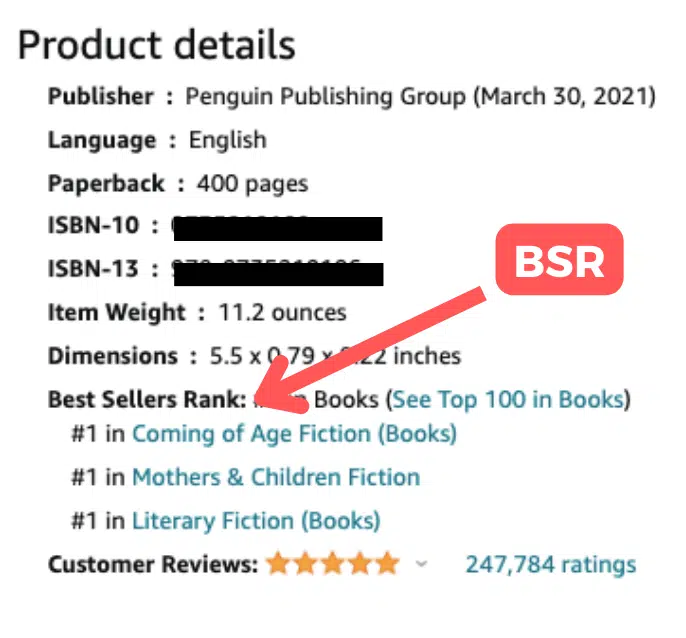Why not sell books on Amazon? That’s a great way to start an online store, make some extra income, and pave the way for your online brand.
In fact, Jeff Bezos launched Amazon as a digital bookstore in 1994. Now, the marketplace sells thousands of products to over 300 million customers. But Amazon still offers ample opportunities for book sellers. eMarketer states that 62.7% of books, videos, and music were bought online in 2020. It is probable that the percentage would be higher today.
Now, selling books on Amazon is not as simple as it seems. You must consider pricing, fulfillment, and marketing. It’s also key to know the best types of books to sell.
And that’s why we’re here today! Below, we designed a quick guide to help you set up a successful bookstore on Amazon.
Let’s dive right in.
Should You Sell Books on Amazon?
In a word, yes. Books are seasonal free commodities that never really go out of style. In fact, books are among the top 5 product categories on Amazon, according to SellerApp.
Many customers buy books on Amazon, whether it is in print or digital formats. AMZScout states that the marketplace holds three-quarters of the eBook market, and a bit over 50% of the print book trade.
Clearly, books offer a steady market base and high profit margins for new sellers. This makes bookselling a low-risk investment.
And depending on your setup, you can also start your store with low investments, and scale up over time.
For example, you can choose the size and extent of your online bookstore. This means there’s no need to keep a big inventory to get started.
However, starting a bookstore also takes a bit of research. For example, which type of books you will sell: novels or textbooks for example.
There’s also a wide range of genres to deal in, and the chance to sell new or used books.
Also, you must limit yourself to specific genres at first.
This way, you can market to specific niche audiences, which will help drive customer engagement.
How to Set Up a Bookstore on Amazon
Let’s now explore how to sell books on Amazon. There are 5 key steps to starting a successful online bookstore.
1 – Choose the Types of Books to Sell
You need to choose the types of books you’ll sell. The key is to go for books with constant customer demand and high profit margins.
According to SellerApp, the best-selling book categories are:
- Textbooks
- Hardcovers
- Non-fiction
- Comic books
- Self-help
- Biographies and memoirs
- Health & fitness
- Religion & spirituality
There are a few ways to choose the books you can sell on Amazon. The first is to check Amazon’s Best Seller Rank (BSR).
You can find the BSR included in a book’s product details:

The BSR shows the monthly sales of a specific book. So, the higher the BSR, the better sales a book gets. However, that also means that the book may have a lot of competitors. Customers are likely to decide whether or not to make a purchase depending on this ranking.
As a rule of thumb, you should go for books that hold a BSR under 100,000. This will help you bypass the competition, and even sell a book in less than a day.
Merchants can also rely on book scanners to find new books to sell on Amazon. A book scanner can detail a book’s pricing, BSR, shipment rates, and profit margins.
You can use tools like JungleScout or AMZScout to check if a specific book is worth your time. With such information, you’ll determine the best offers, and come up with competitive prices.
Related content: JungleScout vs AMZScout Comparison
2 – Source Your Bookstore Inventory
A key question for booksellers is whether to source and offer new or used books. Let’s look into each kind:
New books are brand-new copies with original wrapping, according to Amazon’s book condition guide.
New books are in high demand from sellers. You can source them straight from distributors or the publishing company.
That said, they may be harder to get since large bookstores handle most prints. You may also need to buy new books in bulk to meet demand.
Used books are the way to go for small, independent brands. They’re easy to find in libraries, book shops, thrift stores, and estate sales. Plus, you can always buy them cheap.
Now, Amazon has very specific guides for sellers who deal in used books.
Here are the condition guidelines:
Used books don’t have the same demand as new ones. That said, you can always boost their pricing to make a profit. Plus, unique finds will incur great resale prices. Furthermore, marketing the “reused” factor can help attract the ever-expanding eco-conscious buyer market.
You can also set up a store focused on collectible books. This will get you access to unique niches. For example, you can deal in the following books:
- Scarce or out-of-print copies
- First editions and uncorrected proofs
- Author-signed books
Now, conditions matter even more when selling collectible items. Here are the condition guidelines for collectible books:
Note: Books printed before 1970 may not feature an ISBN. For such cases, you can contact Amazon to request an ISBN exemption.
3 – Set Up your Amazon Seller Account
You can’t move forward without being a registered Amazon merchant. This is key to listing and selling books in the marketplace.
Amazon sellers also get access to Seller Central. That’s the hub where you’ll manage inventory, sales, and customer service.
Here are the details you need to create an Amazon account:
- Name, address, and contact info
- Company email and phone number
- Credit card and Tax ID data
- Authorized billing address
New sellers choose to create an individual or a pro account. The former is free to set up, but you’ll pay a $0.99 fee for every sale. Pro accounts forfeit such toll, but they incur a $39.99 monthly fee.
4 – Select a Fulfillment Option
You’ll also need to choose your fulfillment method. Amazon features two options: Fulfillment by Merchant (FBM) and Fulfillment by Amazon (FBA).
The FBM way gives sellers full charge of their Amazon store. You handle sales, stock supply & management, service, and deliveries. FBM is a great option for niche bookstores that handle niche-specific orders.
In contrast, FBA grants access to Amazon’s logistics operation. While you handle selling and marketing, Amazon manages storage, deliveries and service. FBA is the go-to choice for bigger stores who deal with big inventories.
Related content: How to Create a Seller Account on Amazon
5 – List and Sell Books on Amazon
Once you have your stock of books ready to sell, you can set up listings on Amazon. Here’s the starting process:
- Log in to Amazon Seller Central
- Open the Catalog and select the Add Product option.
- Submit the book’s ISBN.
The ISBN is an exclusive ID for books. It can have 10 to 13 digits. You can find the ISBN on the copyright page, or on the back cover.
Now, to submit books already listed, you should do the following:
- Submit the book’s ISBN or title on Amazon’s search bar.
- Click the button “Sell on Amazon”, right below the buy box.
From here on, submit the following data:
- SKU code. This is your seller’s code to identify your product on Amazon.
- Condition. Your options are: “New”, “Like new”, “Very good”, “Good”, and “Acceptable”.
- Price. The final pricing depends on the book’s condition. The better the quality the higher the price you can set.
- Quantity. Submit the number of copies you own of a particular book.
- Fulfillment channel. Choose from FBA or FBM options, as we saw above.
Bonus: Manage and Optimize Your Listings
Treat your book listings as any other product listing on Amazon. Highlight the best details to customers. Tell them what the book is about, and why they should be interested in the content.
Also, make sure you submit the full title, using clear and concise wording. And don’t forget about the book’s details. That includes the author, format, pages, publishing house, and edition.
Final Thoughts
It’s clear that books are here to stay. Even after 28 years, Amazon still sells thousands of books every year.
For users, books represent endless learning opportunities. For sellers, they offer a steady source of customers and income.
Selling books is a great starting point to creating a solid online store. New book merchants can save upfront costs. Plus, you can tackle different market niches to boost brand awareness.
Don’t wait any longer! Bookselling is a great way to make some passive income or to set the foundations for your online store.
Best of Luck!
Author

Esteban Muñoz is a content writer at AMZ Advisers, with several years’ experience in digital marketing and e-commerce. Esteban and the AMZ Advisers team have been able to achieve incredible growth on Amazon for their clients by optimizing and managing their accounts, and creating in-depth content marketing strategies.



